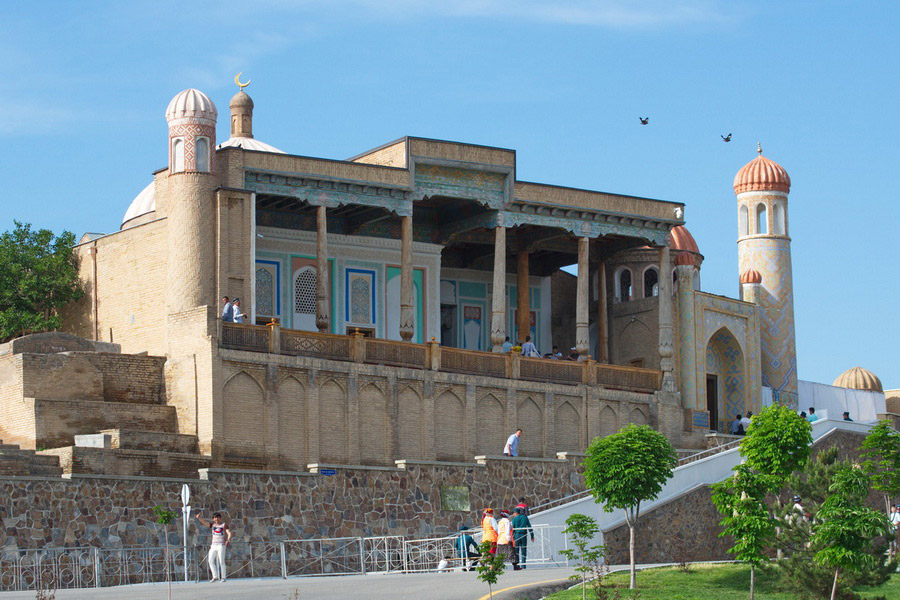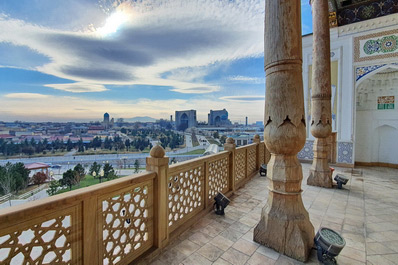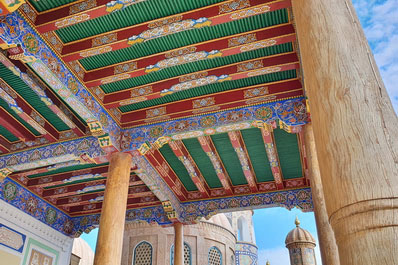Hazrat-Khizr Mosque, Samarkand

Hazrat-Khizr Mosque (Hazrati Khizr) is one of Samarkand’s most prominent religious landmarks. Archaeological findings reveal that in the 8th century, Samarkand’s first mosque was built on this site, which had previously hosted a Zoroastrian temple. Situated on the historic Afrasiab hill, the mosque is named after Khizr (also known as Khidr), a legendary figure in Islamic tradition believed to appear to help people.
History
Constructed in the 8th century as Islam spread across Central Asia, Hazrat-Khizr Mosque was destroyed during the Mongol invasion in the 13th century, with only parts of its foundation remaining. In 1854, large-scale restoration began, and by 1919, the mosque’s minaret and entrance portal were completed. In 2016, Islam Karimov, the first president of Uzbekistan, was buried here, and a mausoleum was later added over his grave without altering the historical character of this UNESCO World Heritage Site.
Legends
Hazrat-Khizr is surrounded by numerous legends. One tale claims he was an assistant to Alexander the Great, who sought a fountain of eternal life. Hyzr found the spring and filled a jug, but it broke before reaching the ruler. However, Hyzr himself bathed in the waters, gaining eternal life. Another story says he helped Prophet Muhammad’s cousin, Kusam ibn Abbas, reach a life-giving well, thereby becoming the “Living King” or “Shahi-Zinda”, lending its name to the nearby mausoleum complex.
Architecture
Hazrat-Khizr Mosque is distinct for its vibrant facade and minarets, adorned with colorful tiles in yellow, green, and blue, rather than the blue majolica seen in many Uzbek mosques. Its spacious balcony with carved wooden columns is richly painted in orange, turquoise, and green.
From the hilltop, the mosque offers panoramic views of Samarkand, including the Bibi-Khanum Mosque and the Shahi-Zinda complex.



